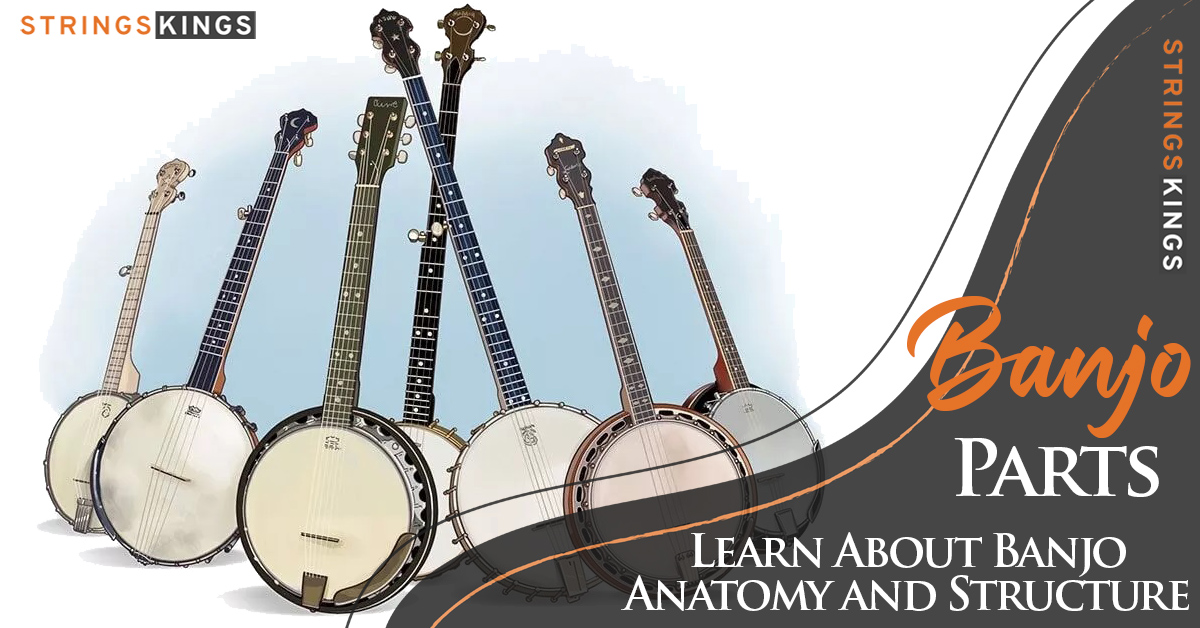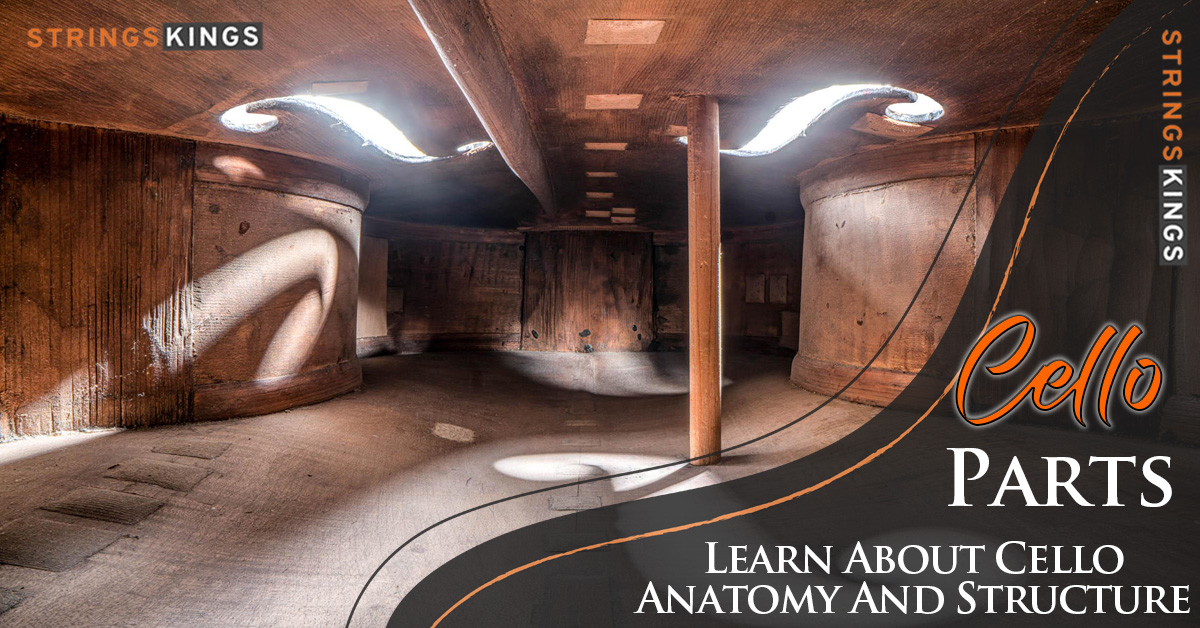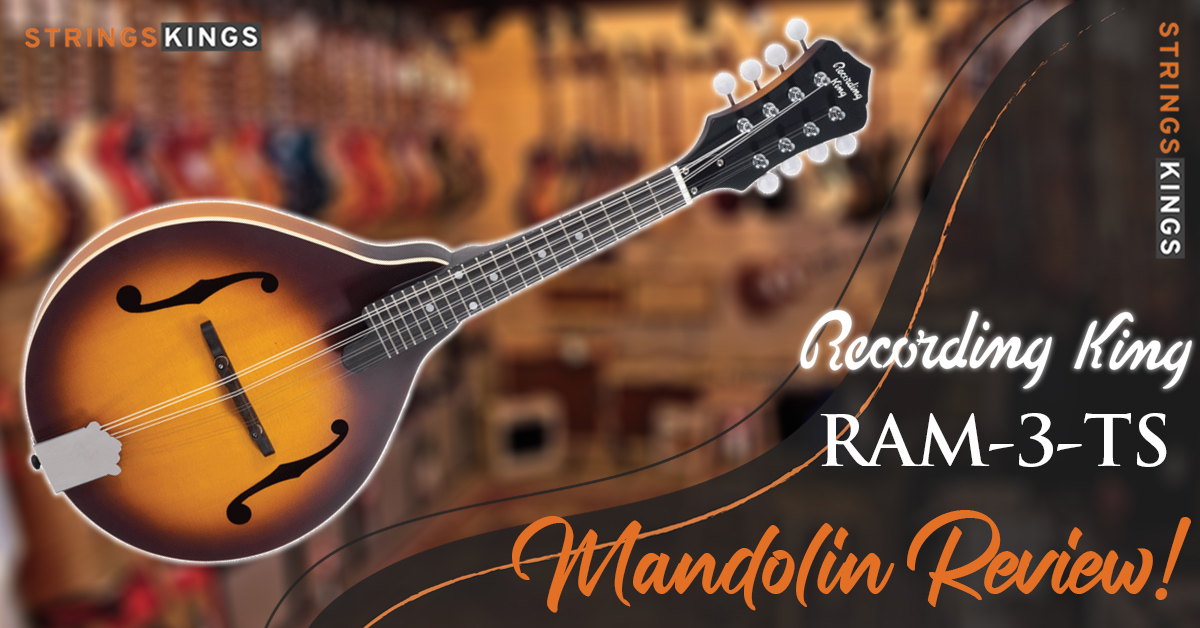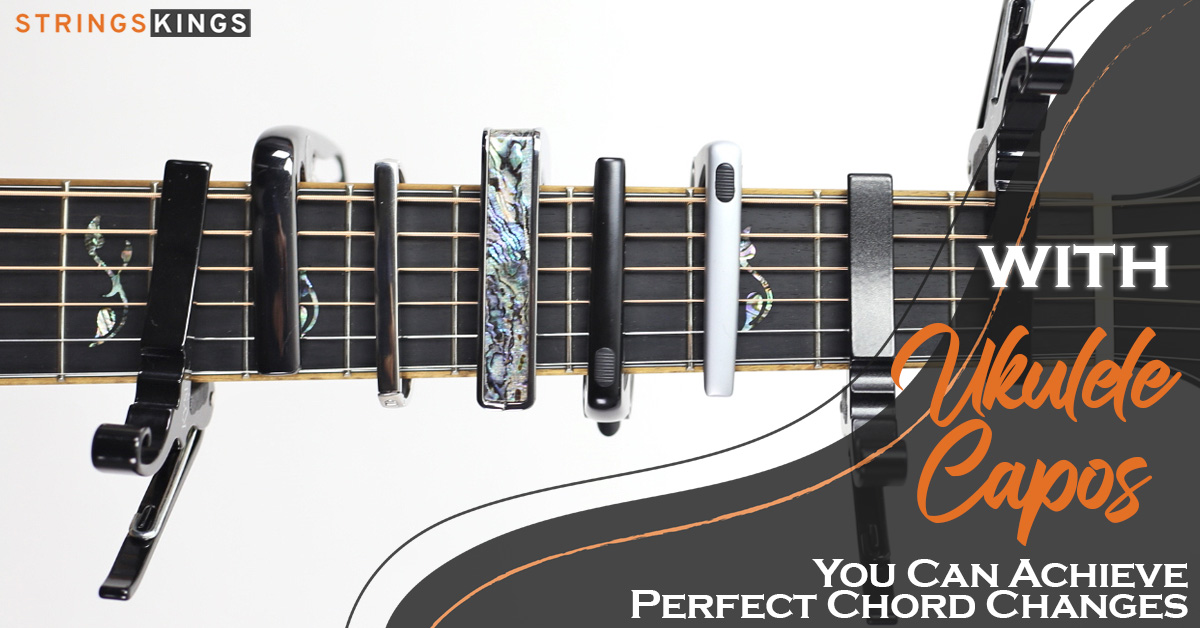Table of Contents
Mandolin Parts, Learn More About Parts Of A Mandolin!
Originally developed in the 18th century, the mandolin is a small, handheld stringed instrument. It evolved from another instrument, the mandora, in Europe. Mandolins are still used today, especially in bluegrass music, where their warm, mellow sounds are beloved.
A modern mandolin is made up of a wooden body and four steel strings. But the mandolin’s got so much more to it than that. Its unique and brilliant tone is derived from multiple intricate parts of the instrument’s body.
We will describe the various parts of the mandolin in this article, giving a detailed explanation of how the instrument is constructed.
Mandolin Anatomy
Knowing the various parts of the mandolin is helpful if you’re learning how to play it.
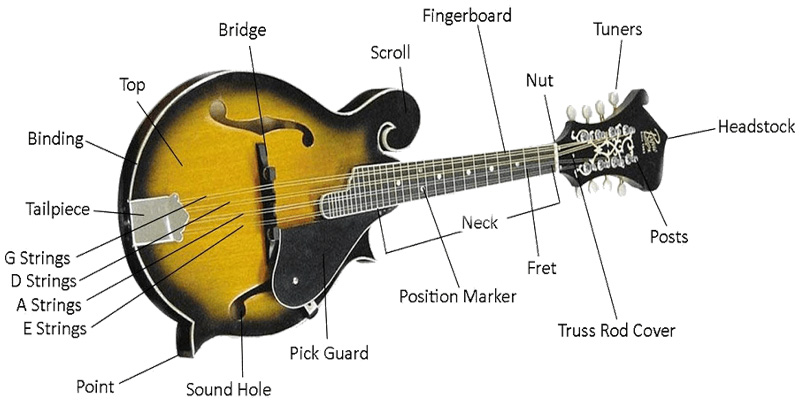
In general, the mandolin is divided into three sections:
Body: The body produces sound. As you strum the strings, sound waves reverberate inside the hollow chamber of the body, creating sound. Different types of wood can be used to make the mandolin, including rosewood, mahogany, birch, and maple. Sound quality can be affected by the type of wood.
Neck: A mandolin’s neck is a long piece of wood that extends from its body and has strings running up it. By stretching the strings, different pitches can be made due to the tension it creates.
Head: Mandolin heads are wooden pieces that attach to the instrument’s neck. Tuning pegs are fastened to the head, which helps to adjust the pitch of the strings by changing the tension on them. Below, we discuss those parts in more detail.
Various smaller pieces (which will be discussed below) are attached to these three main components of the mandolin.
The Headstock
Tuning the mandolin is done on the headstock, where the tuners are attached. Additionally, it may display the brand of your mandolin.
The headstock of some instruments is decorated with stickers for fun (and so the musician can easily identify the instrument).
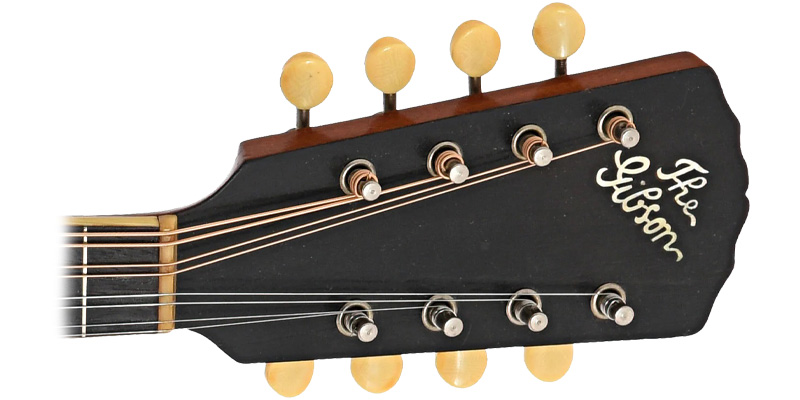
Tuners – Tuning Pegs
Mandolin tuners ensure that each string is tuned precisely to the correct pitch. A mistuned instrument is the last thing a musician wants, so know how to use your tuners!
A tuner consists of a small gear-controlled peg called a turning peg. Instrument strings are attached to them via the headstock. The tuner’s knob can then be turned to change the pitch of the open string.
Nut
Located at the end of the mandolin’s fingerboard is the nut. There are tiny ridges carved into the slender plastic block. Strings are held in place by these ridges, guiding them to the tuners and keeping them in place.
Even though modern mandolins usually have a plastic nut, older instruments may have wooden ones. It is also possible to find older nuts made from materials such as mother-of-pearl or ebony. These materials are pretty but can increase string buzz and are not very practical.
Frets
Those of you who are new to mandolins have probably already developed a deep appreciation for the frets on your instrument. Using the frets, you can determine where to place your fingers along the neck of the instrument.
They’re thin metal strips attached to the fretboard. Putting your finger between two frets physically shortens the string. As a result, the sound it creates changes pitch.
In other words, by pressing your finger down on different frets on different strings, you can create a variety of musical notes, allowing you to explore all the possible sounds of your mandolin.
Fret markers
A fret marker is a tiny dot placed at predetermined places along the fingerboard. As they are usually a pearl color, they contrast with the darker fingerboard, making them easier to see.
A fret marker is placed on the 5th fret, 7th fret, 10th fret, and 12th fret. It is helpful for beginners to use fret markers to determine where their fingers should be placed when playing the mandolin.
There are times when fret markers are placed on the neck’s side to make them easier to see. As a result, the player will be able to see them immediately when they glance down.
The Fretboard – Fingerboard
In a mandolin, the fretboard is glued to the neck and holds the frets.

To host the frets, thin pieces of steel are usually hammered or pressed into grooves in the board. Fretboards are sometimes called fingerboards.
Pick Guard
To strum the strings of a mandolin, you probably use a small pick. Picks can protect your fingers but can also damage the instrument, causing scratches and nicks.
This is where the pickguard comes in. When you’re strumming vigorously and playing chords, this handy accessory can prevent the mandolin from being damaged.
The Sound Hole
Mandolins wouldn’t be able to make much noise if they were just solid blocks of wood. It is the hollow body of the instrument that allows sound to reverberate. Via the movement of air, the resulting sound emerges from the soundholes.
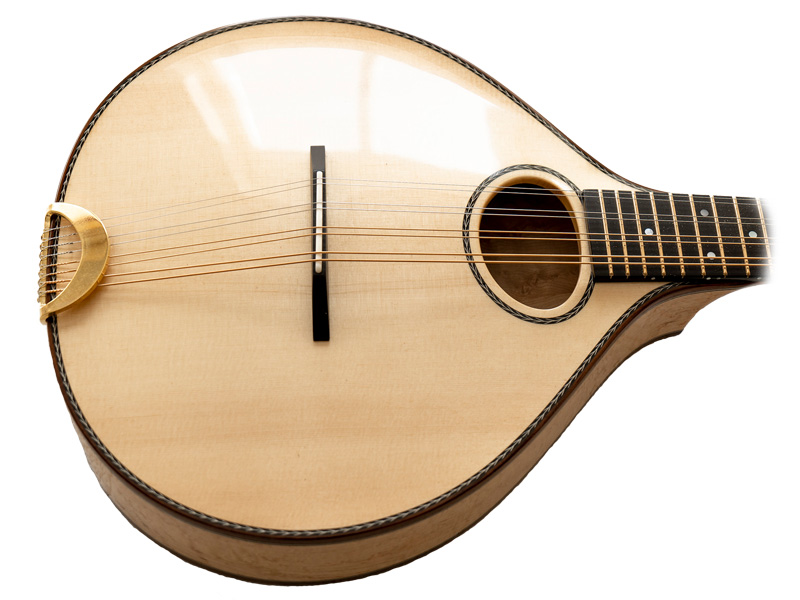
Sound holes come in two types, and depending on the instrument, you may have one or the other. Round holes look like those on acoustic guitars, while f-shaped holes resemble those on violins, which have lower-case f-shapes.
As they play, some players rest their third and fourth fingers on the pickguard.
Soundboard
Soundboards are located on the body’s top. In general, it’s made of spruce wood (though the body may be made of other woods).
To that end, a variety of tonewoods are available, including German Spruce, Adirondack Spruce, and Red Spruce. A custom-built mandolin’s sound can be affected by the wood you choose.
The Bridge
It is made of a small piece of wood with small ridges carved into it. The strings are guided across the instrument’s body and soundhole by these.
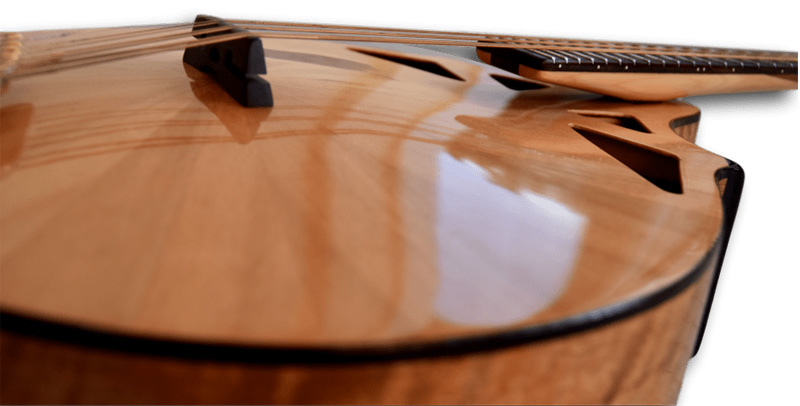
Besides lining up the strings, the bridge transmits the vibrations created by the springs to the mandolin’s soundboard. String tension holds the mandolin’s bridge in place.
Never worry if the bridge pops right off when you replace a mandolin string yourself. It is normal for new players to experience this! Your instrument isn’t permanently damaged, so don’t worry.
Tailpiece
Mandolin tailpieces are attached to the body’s side. In most cases, it is a cast or stamped piece of metal that is used to anchor the strings and secure them to the instrument.
The bridge will fall off when you change a mandolin string, but not the tailpiece.
Tailpieces indeed serve a practical purpose, but they can also serve as decorative elements that enhance the aesthetics of the instrument.
Florida
Floridas function as extensions of fretboards or fingerboards. Strings on the mandolin can reach higher pitches thanks to it.
Florida gets so high pitches that it’s rarely used by mandolinists, as it’s unsuitable for most songs.
Additional Features
Mandolins can also have the following features:
Scroll: The scroll is a decorative piece of wood that protrudes from the mandolin’s body. It’s a kind of curly cue, resembling a scroll rolled up. It is found on bowl-backs and A-type mandolins mostly for decoration.
Points: Often, mandolin bodies have points carved into them, swerving gently out from the curved side before ending in sharp points. Due to the extra hold created by this, some mandolin players think it is easier to rest the instrument securely on the thigh. F-type mandolins are more likely to have points.
Truss rod and truss rod cover: An optional part of the mandolin is the truss rod, which is a thin steel rod that runs along the neck of the instrument. This can prevent breakage by stabilizing the mandolin neck and straightening curved necks. The rod can be adjusted with a truss rod plate, which is protected by a slim cover.
This video made by “The Acoustic Shoppe” will show you all the mandolin parts together with an explanation about each of them.
Wrapping Up
Despite its small stature, the mandolin’s excellent sound comes from a number of small parts.
If you are a mandolin player or just enjoy listening to it, you can certainly appreciate the artistry involved in crafting it.
Hopefully, our guide has helped you learn more about mandolins and their parts.

